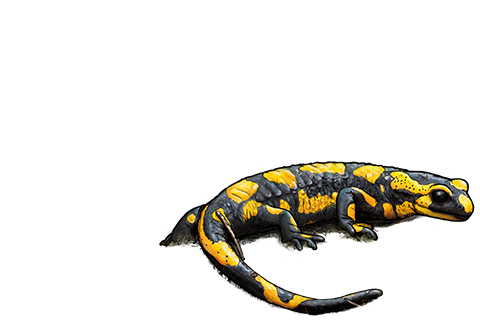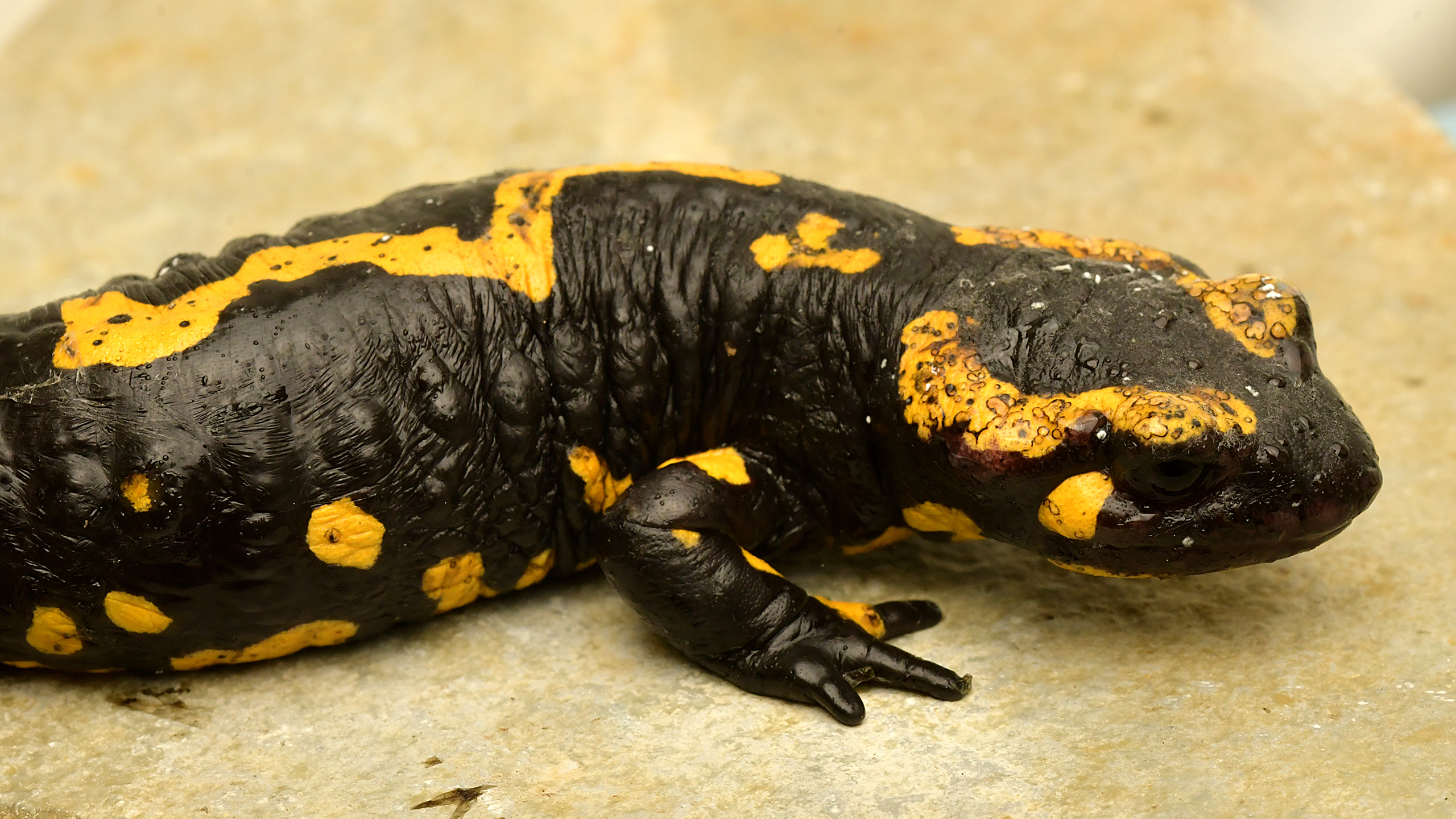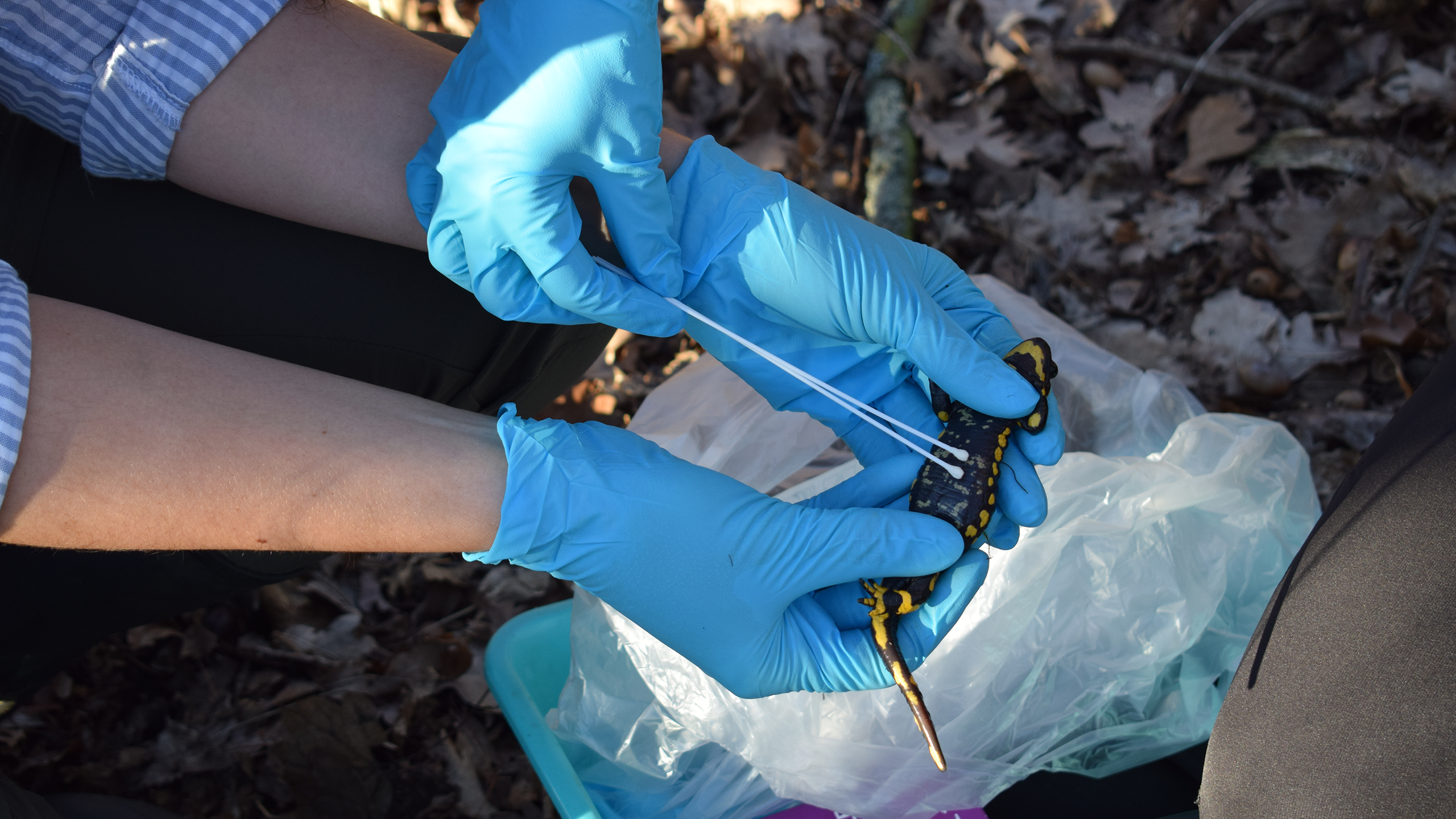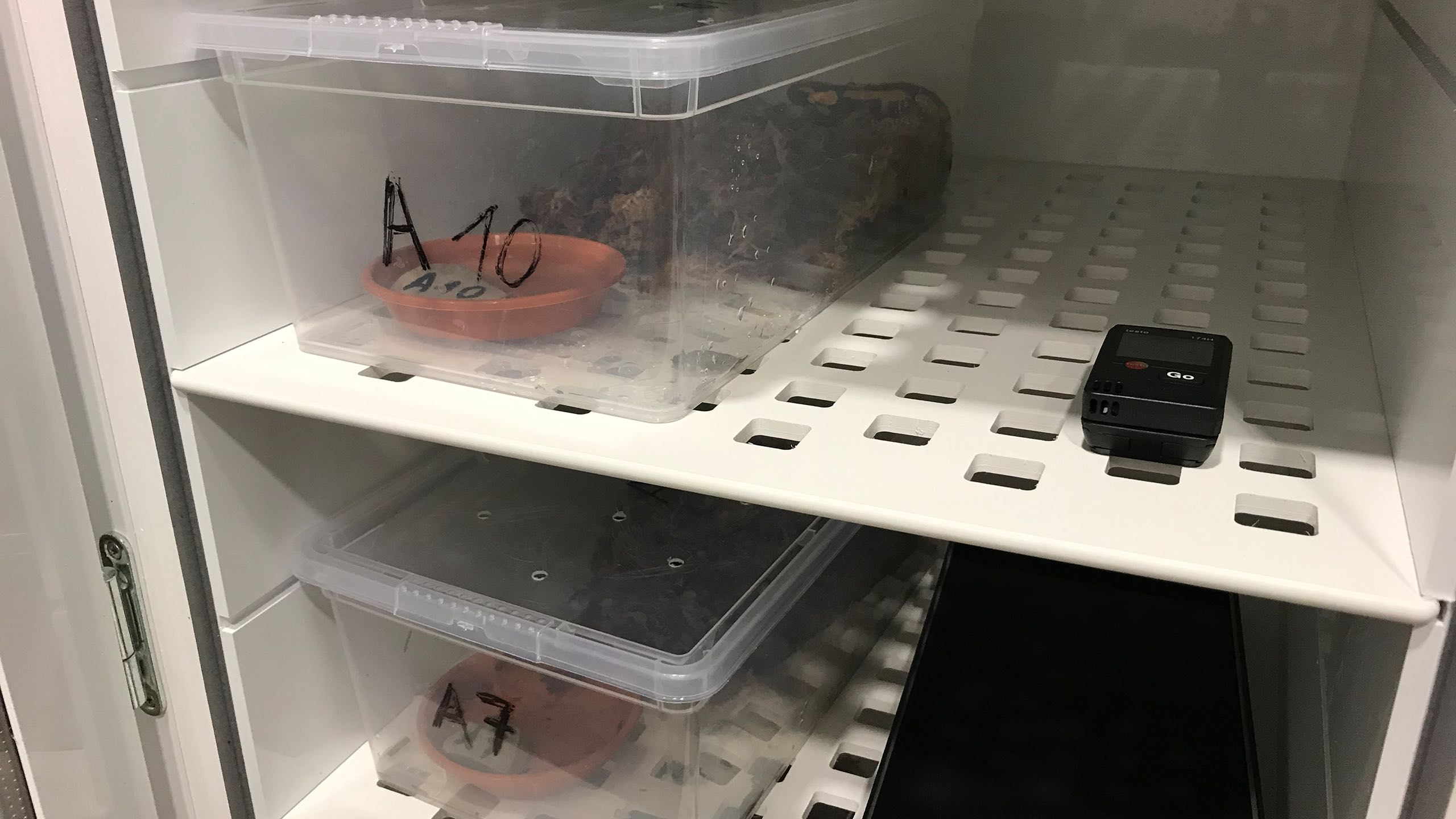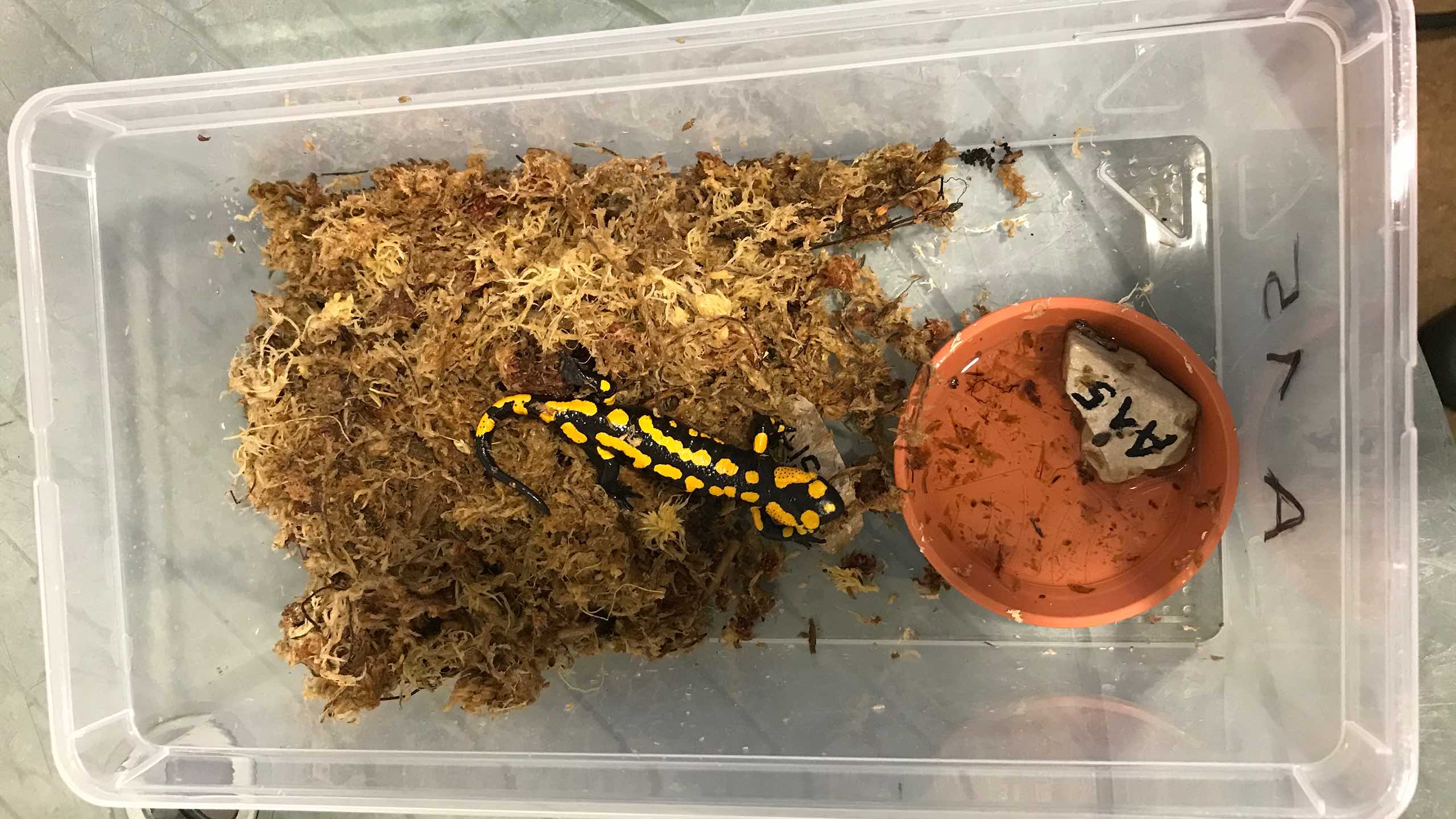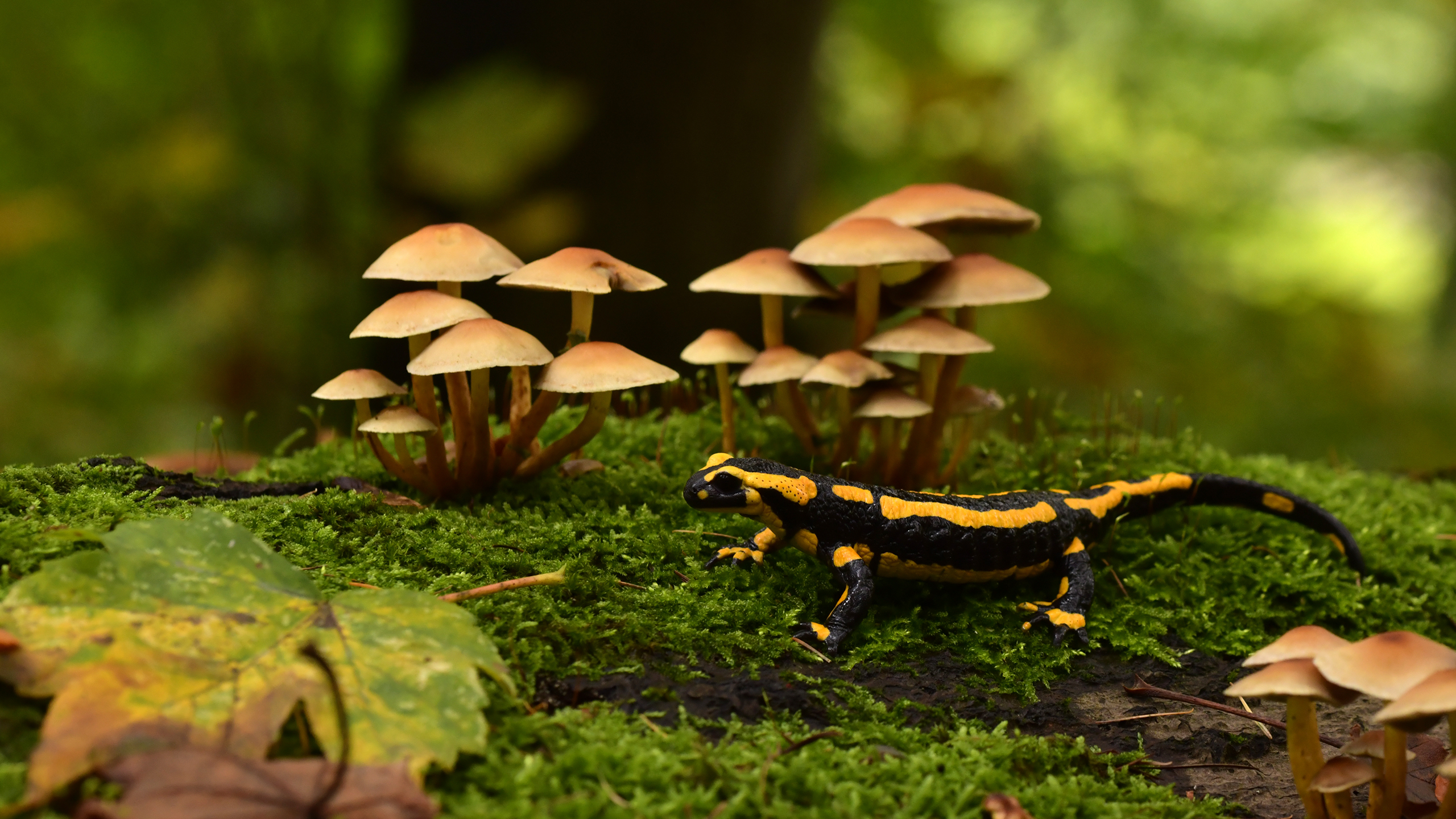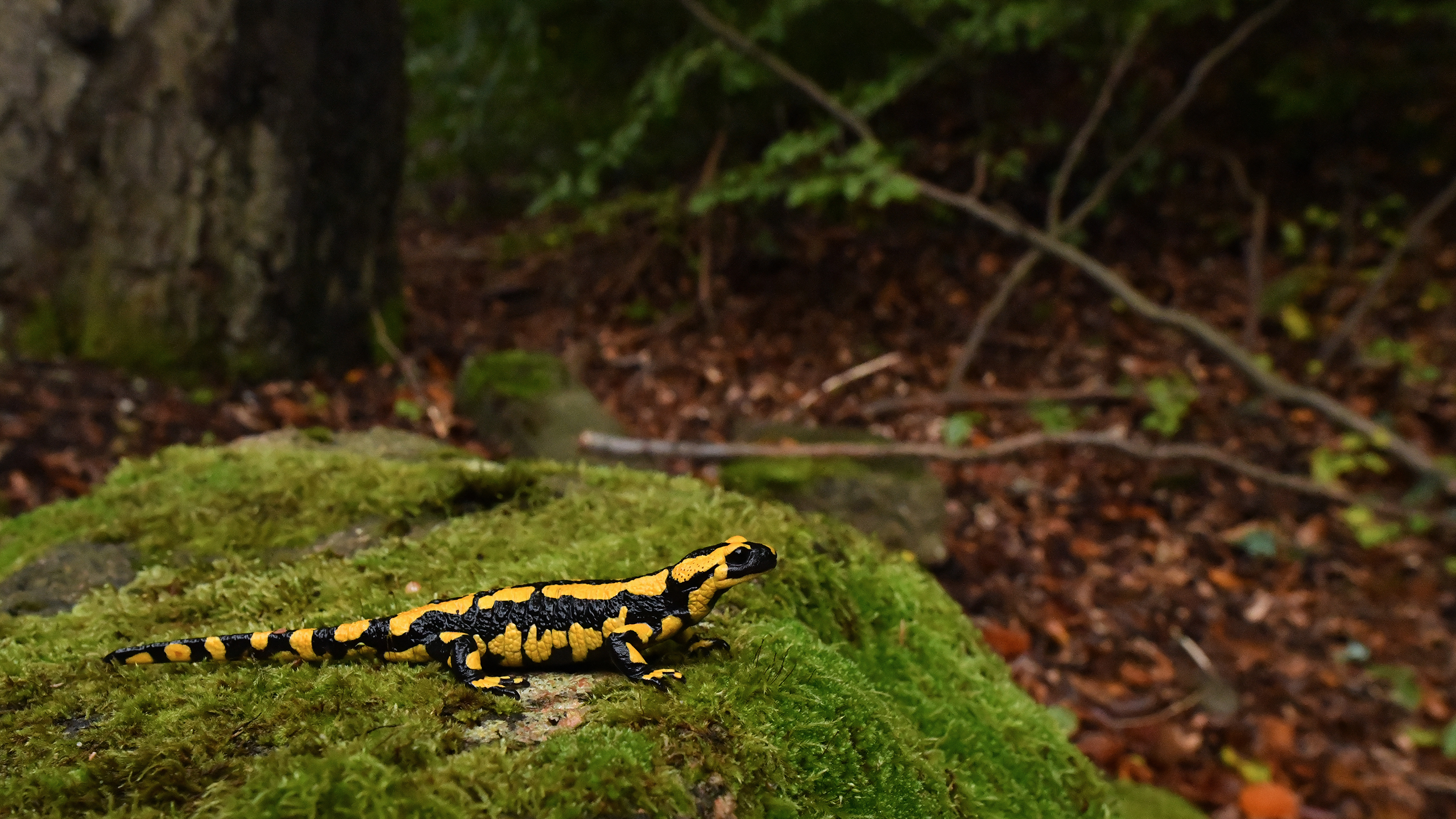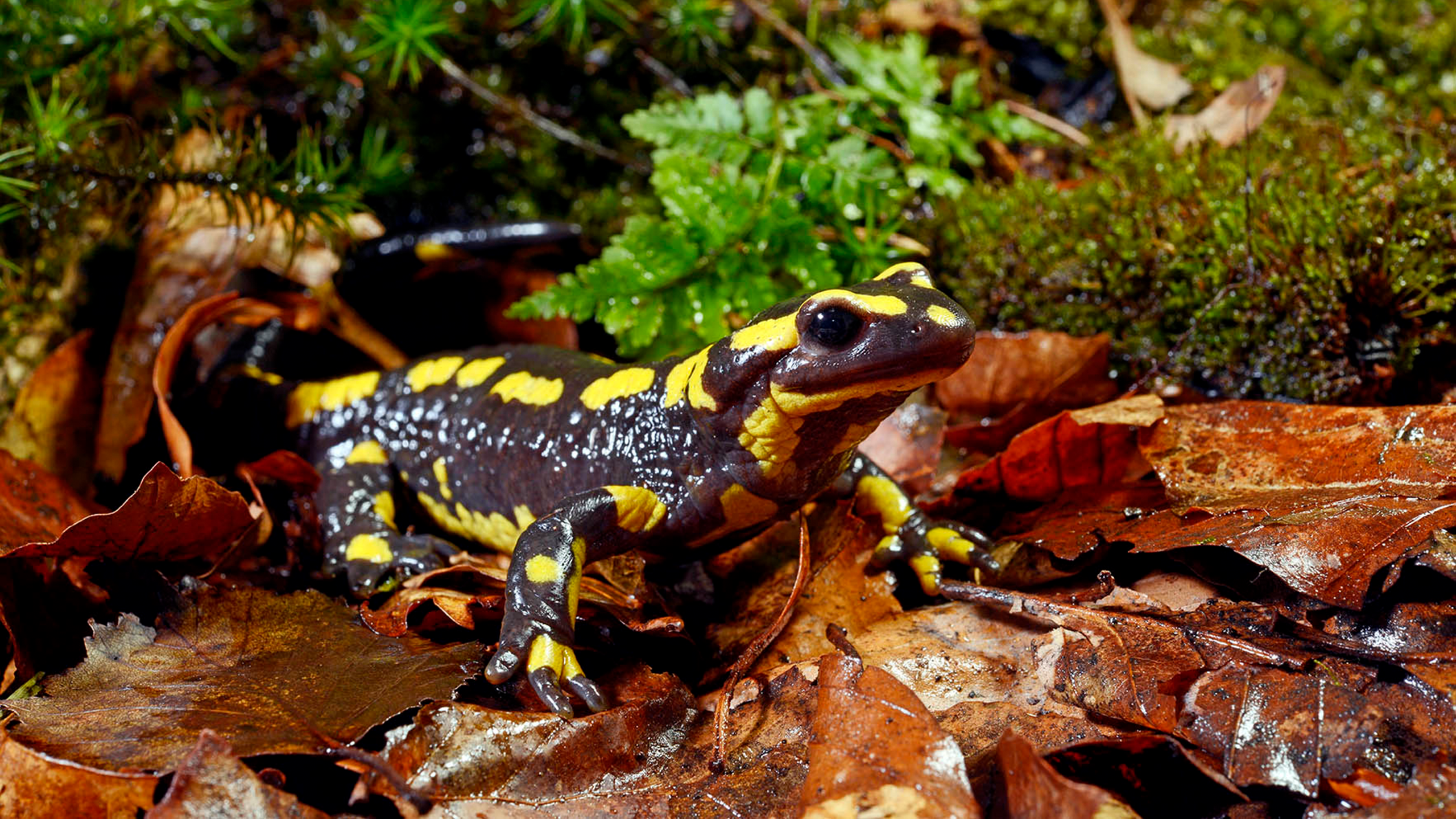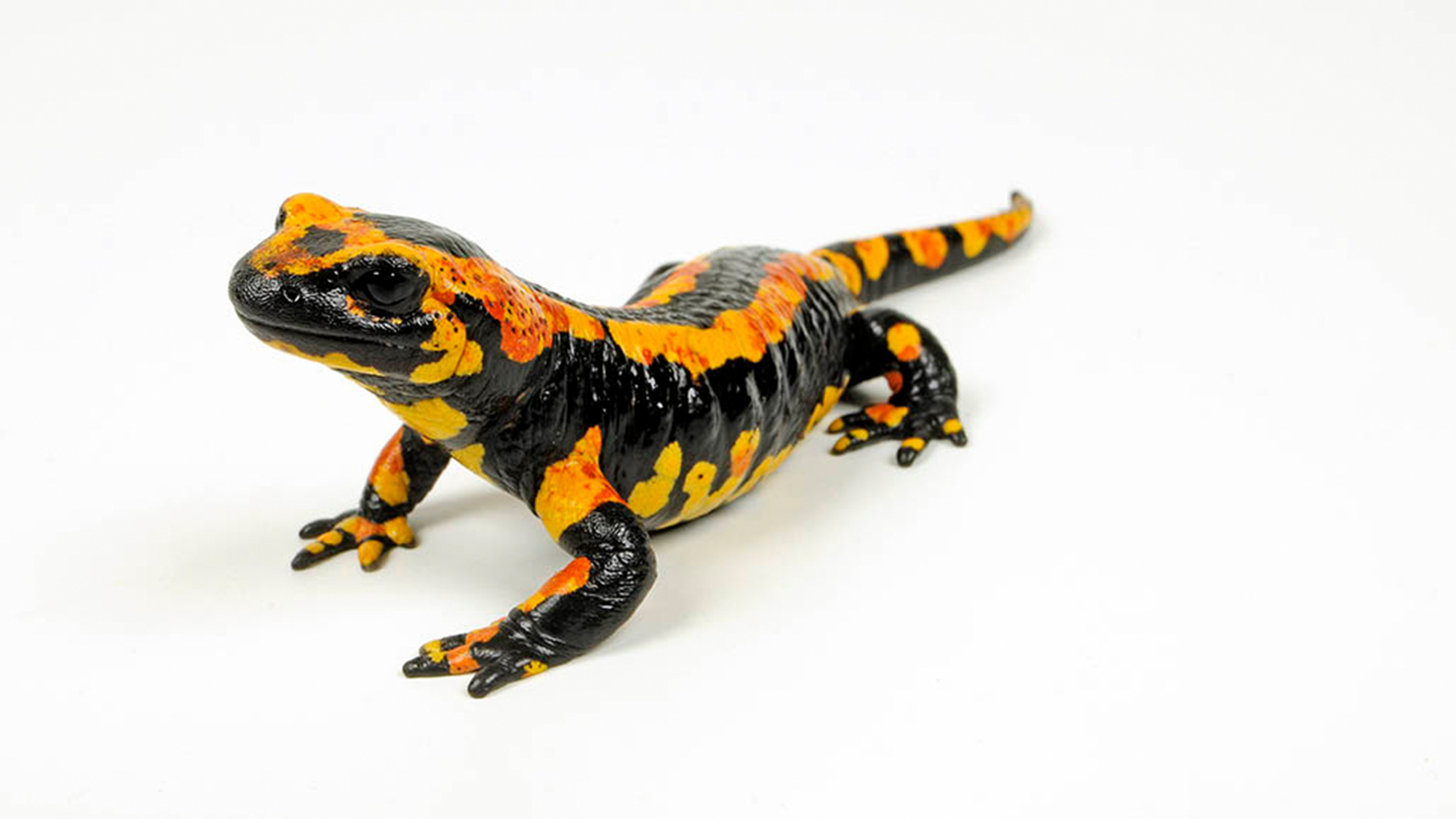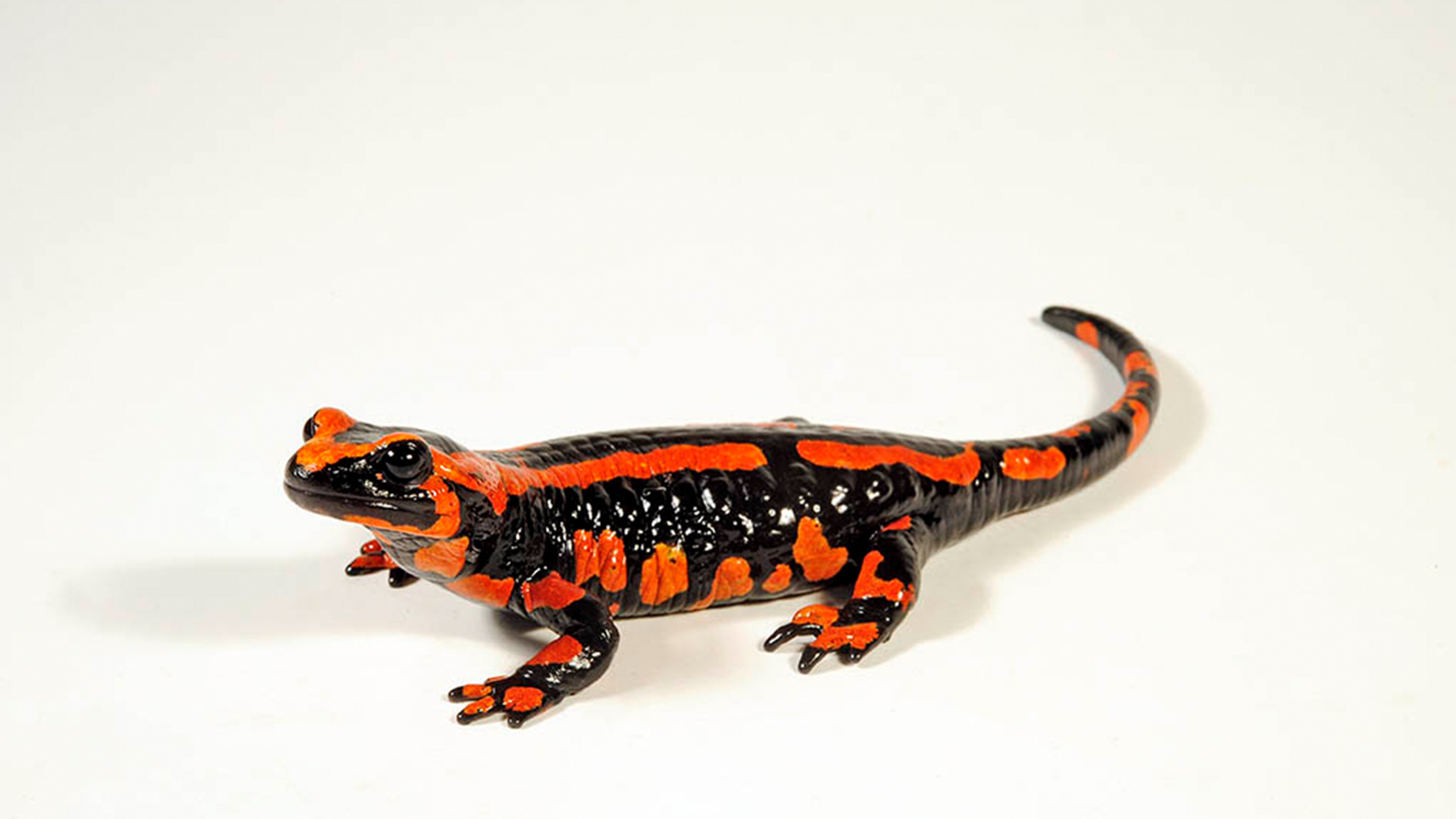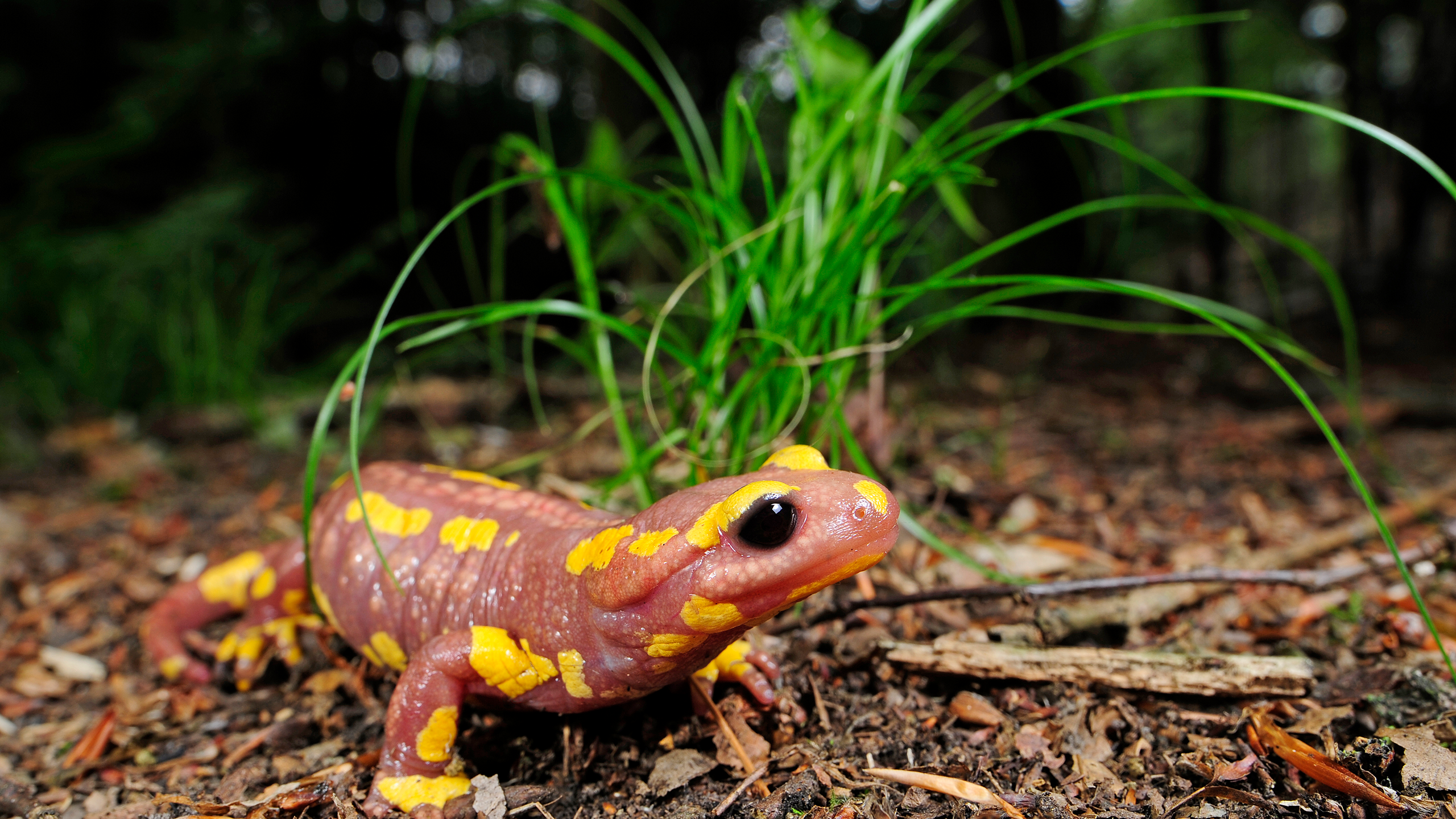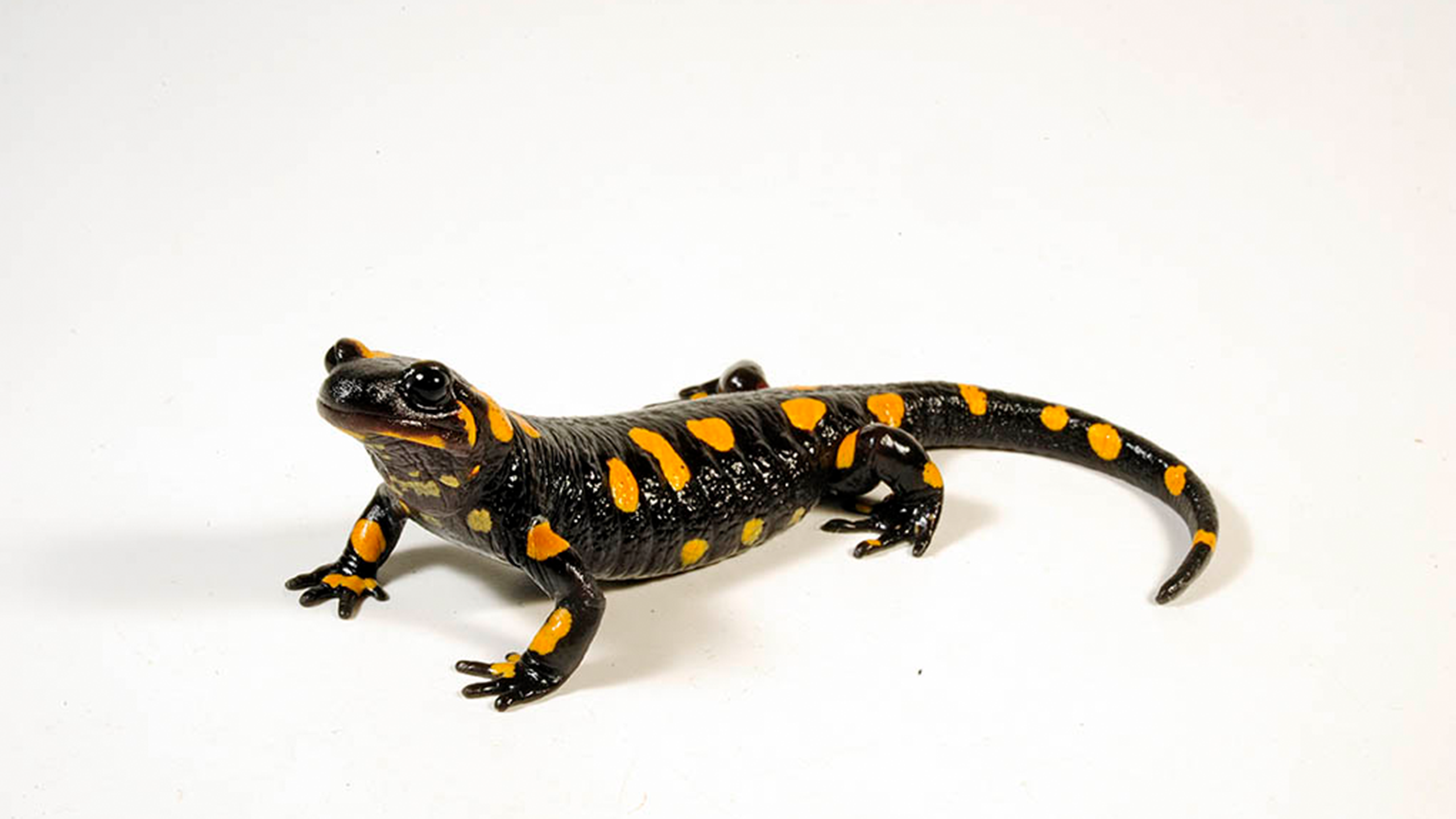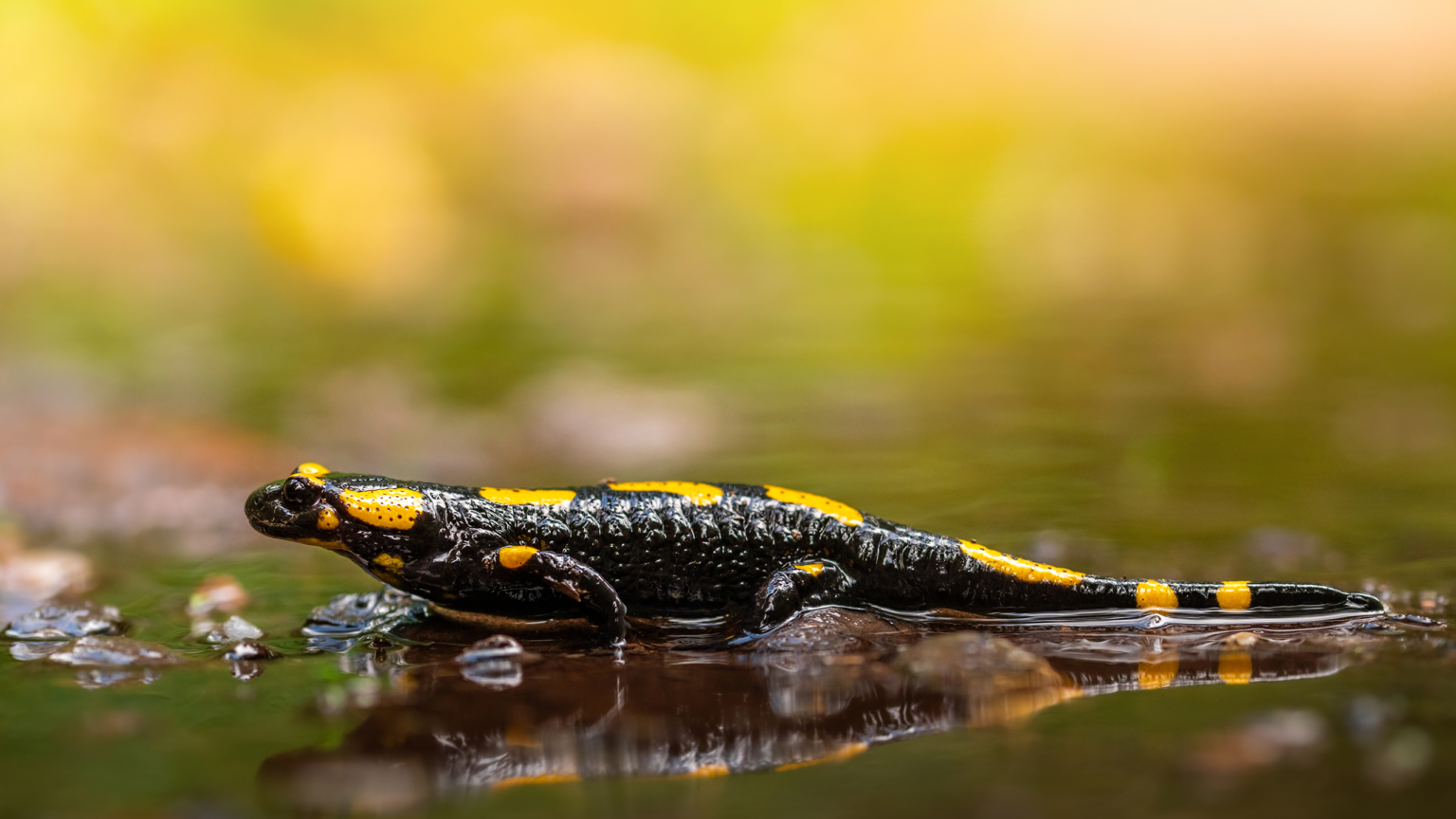Mitteleuropäischer Feuersalamander
Salamandra salamandra salamandra und
Salamandra salamandra terrestris
Mitteleuropäischer Feuersalamander
Salamandra salamandra salamandra und Salamandra salamandra terrestris
Zielvorgabe CC
90 Halter
Stand 11/2025
Zielvorgabe CC
330 Tiere
Stand 11/2025
Zielvorgabe CC
90 Halter
Stand 11/2025
Zielvorgabe CC
330 Tiere
Stand 11/2025
Mit seiner schwarz-gelben Färbung und der stattlichen Größe von bis zu etwa 20 Zentimetern gehört der Feuersalamander zu den bekanntesten und charismatischsten Amphibien Europas. In Mitteleuropa ist er ein typischer Bewohner von Buchenwäldern. Obwohl ihm Lebensraumzerstörung und Umweltverschmutzung zusetzen, galt sein Bestand bisher noch als nicht gefährdet. Doch eine plötzlich neu aufgetauchte Gefahr lässt nun um die Zukunft dieser Charakterart fürchten, für die Deutschland als eines der Hauptverbreitungsgebiete eine besondere Verantwortung trägt.
Die Salamanderpest
Der Salamanderfresser-Pilz
Als Anfang der 2010er-Jahre in den Niederlanden plötzlich massenhaft tote Feuersalamander in scheinbar ungestörten Lebensräumen gefunden wurden, standen Forschende zunächst vor einem Rätsel. Ganze Populationen wurden in kurzer Zeit ausgelöscht. Schließlich wurde der Übeltäter aufgespürt, im Jahr 2013 wissenschaftlich beschrieben – und mit dem selbsterklärenden Namen Batrachochytrium salamandrivorans versehen, kurz Bsal, was übersetzt Salamanderfresser-Pilz bedeutet.
Vielfalt mitteleuropäischer Feuersalamander
Unaufhaltsamer Vormarsch
Nach bisheriger Erkenntnis sterben befallene Salamander, sofern sie nicht behandelt werden. Unglücklicherweise kann der Pilz nicht nur von Salamander zu Salamander, sondern auch über Erde, Wasser, Pflanzen und andere Amphibien übertragen werden. Nachdem er sich vom Dreiländereck Niederlande-Belgien-Deutschland über die Eifel bis ins Ruhrgebiet ausgebreitet hat, wurde er 2020 auch erstmals in Bayern nachgewiesen. Es besteht die große Sorge, dass der Pilz sich flächendeckend ausbreitet. Sogar das Aussterben des Feuersalamanders in Deutschland und seinen Nachbarländern ist damit eine realistische Gefahr.
Unglücklicherweise kann der Pilz nicht nur von Salamander zu Salamander, sondern auch über Erde, Wasser, Pflanzen und andere Amphibien übertragen werden.
An Bsal gestorbener Feuersalamander in Essen © Miguel Vences
Bedrohte Salamander-Vielfalt
In der Natur kann man gegen den Pilz bislang nichts unternehmen – außer zu hoffen, dass er sich doch nicht weiter ausbreitet oder dass die Salamander irgendwann eine natürliche Resistenz gegen ihn entwickeln. Bis dahin sind womöglich schon ganze Linien des Feuersalamanders verschwunden. Was ein besonders schwerer Verlust wäre, denn Feuersalamander ist nicht gleich Feuersalamander. Neben den individuellen gibt es wichtige regionale Unterschiede. In Deutschland kommen nach bisheriger Kenntnis drei große genetische Linien vor, die sich auf die beiden Unterarten Salamandra salamandra salamandra und S. s. terrestris verteilen. Innerhalb dieser „Hauptlinien“ können aber auch einzelne Populationen ihre Eigenheiten entwickeln, sei es im Aussehen oder im Verhalten.
Zum Schutz des Feuersalamander wurde 2024 das Feuersalamander.NET gegründet.
Eine Zuflucht vor der Seuche
Feuersalamander werden in sehr minimalistischer Haltung oder in naturnah eingerichteten Terrarien gepflegt. Für 2-3 Tiere sind z. B.
100 x 50 cm Grundfläche empfohlen. Die Tiere werden trocken (aber mit feuchter Versteckmöglichkeit und Wasserschale) und kühl (nicht über 20 °C im Sommer und unter 10 °C im Winter) gehalten. Sie fressen z. B. Würmer, Grillen und Käfer. Die Aufzucht der Larven erfolgt in Aquarien.
Für Halter
Basisinformationen zu Biologie und Haltung
Feuersalamander werden in sehr minimalistischer Haltung oder in naturnah eingerichteten Terrarien gepflegt. Für 2-3 Tiere sind z. B.
100 x 50 cm Grundfläche empfohlen. Die Tiere werden trocken (aber mit feuchter Versteckmöglichkeit und Wasserschale) und kühl (nicht über 20 °C im Sommer und unter 10 °C im Winter) gehalten. Sie fressen z. B. Würmer, Grillen und Käfer. Die Aufzucht der Larven erfolgt in Aquarien.

